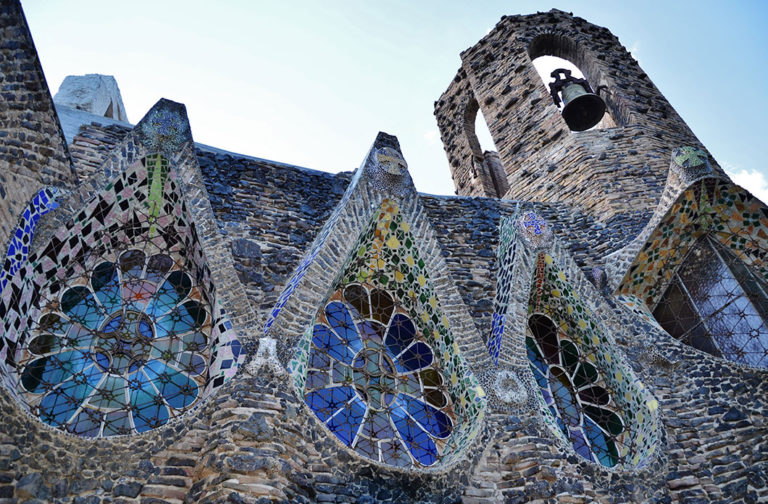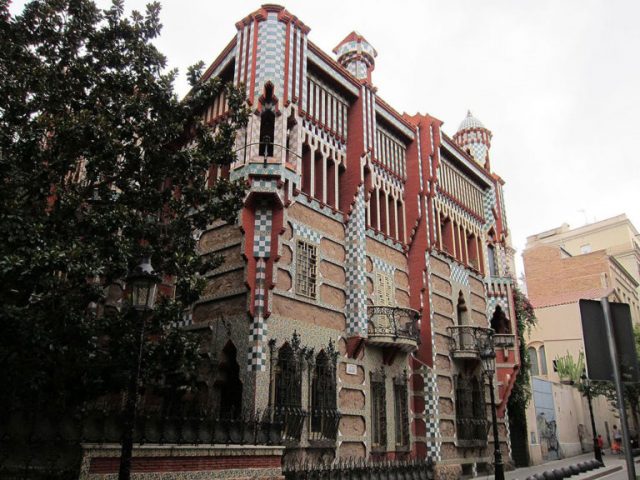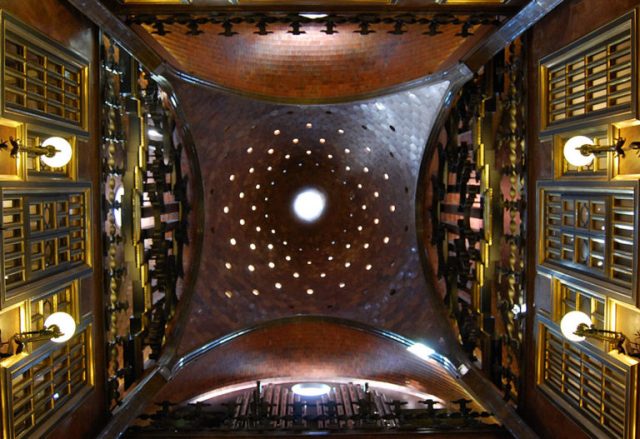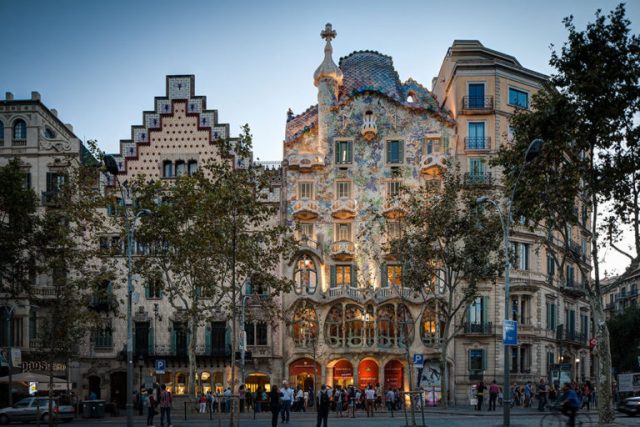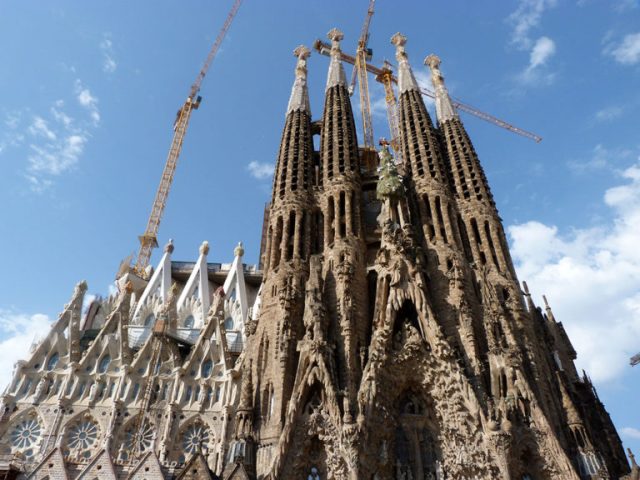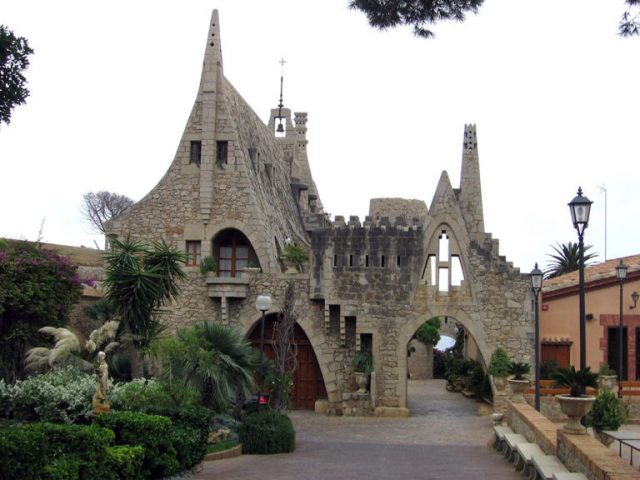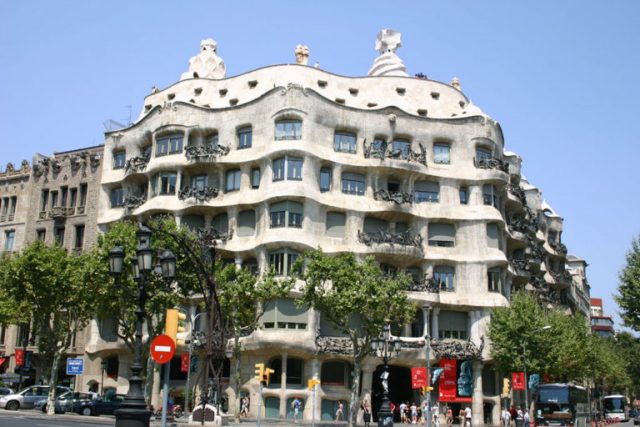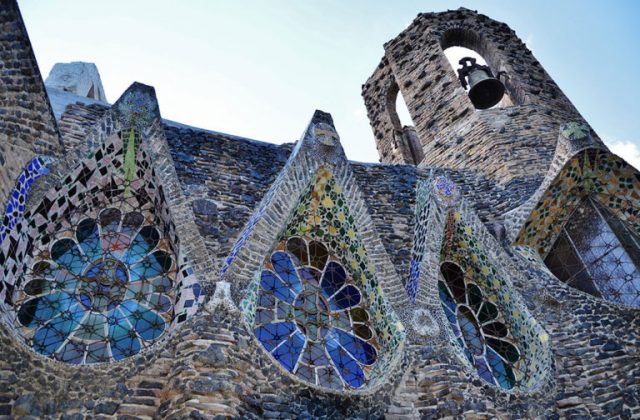Antoni Gaudi is a major artist of the twentieth and the nineteenth century. This original and fantastic architect is distinguished from all the others by his creations sometimes colored, sometimes ultra stylized. Pioneer of the new art in Spain, he marked the spirit of his artworks. We focus on his finest works.
Antoni Gaudi is the creator of the Sagrada Familia, the Casa Batllo and the Church of Colònia Güell. Seven of his works have been inscribed on the World Heritage List by UNESCO. Although the majority of his creations are in Barcelona, his influence has spread throughout Europe. To better understand his talent, here is our totally subjective ranking of his eight most beautiful works.
Casa Vicens
The Casa Vicens is the first architectural work of Antoni Gaudin. Created between 1883 and 1888, it was first commissioned by a stockbroker named Manuel Vicens Montaner. Its “art nouveau” side, with its ivy arabesques and bird motifs on the door frames, make the Casa Vicens a work of art. His mosaics of Moorish influence and geometric motifs are perfect representations of Antoni Gaudin ‘s creativity. The Casa Vicens is now the Gaudi House Museum, and houses a collection of furniture and objects designed by the architect.
Palais Güell
The Palais Guell is a UNESCO World Heritage Site. The palace was built between 1886 and 1891 for the industrialist Eusebi Guëll. Right in the center of Barcelona, the deliberately austere exterior gives way to a sumptuous interior, organized around a central vestibule and a parabolic dome. Consisting of a basement, a ground floor, a noble floor, two upper floors and a terrace, the 500 square meters of the palace are a delight for the eyes.
Casa Batlló
Designed between 1904 and 1906, Casa Batlló was commissioned by textile manufacturer Josep Batlló i Casanovas. It has a unique façade composed of stone, wrought iron, polychrome ceramics and glass. Inside, everything is curved, making it an incredible architectural challenge. With 600,000 visitors in 2011 alone, this work of art is considered one of the most beautiful in the world.
Parc Guëll
Again, the work was commissioned by Eusebi Guëll, as its name indicates. Park Guell was originally composed of 60 houses, only 3 remain. Nevertheless, the beauty of the place remains admirable with its original and unusual geometric and colorful shapes. Its lizard sculpture and its marvelous pinnacles, the Parc Guëll is once again a masterpiece and will not fail to amaze tourists and locals.
Sagrada Familia
A major work of Antoni Gaudi, the Sagrada Familia is a basilica of Barcelona whose construction began in 1882. Still unfinished to this day, the ” expiatory temple of the Holy Family” as its entire Spanish title means, is the typical example of Catalan modernism. As the most visited monument in Spain, it attracted 3.2 million visitors in 2012. And of course, the Sagrada Familia is a UNESCO World Heritage Site .
Cellier Guëll
This cellar was built to house Eusebi Guell’s beverage production. Measuring 28 meters long and 14 meters high, the Guell cellar is a lesser known work of the artist. However, we find its particular style with the angular side of the facade and the materials used, and of course with the location of the work: in Barcelona .
Casa Milà
The Casa Milà was conceived as a mansion, and also prefigures as a representative of Spanish modernism. This is the penultimate architectural work of the artist. The facade of the building, of 9 levels, is made of limestone with the exception of the upper part, which is covered with white tiles. The Casa Milà is also endowed with a strong religious symbolism, with excerpts from the Ave Maria in Latin on the upper cornice for example. It is one of the 10 most visited touristic sites in Barcelona.
Crypt of the Colony Guëll
Built between 1908 and 1914 , the crypt is an unfinished project of the architect. While Gelll falls ill, Antoni Gaudi abandons the project. At the base there is a double church, 25 meters wide by 60 meters long, but the crypt of Colonie Guëll remains a beautiful monument far superior to the others. The genius of Gaudi can be seen even in this kind of unfinished work.
